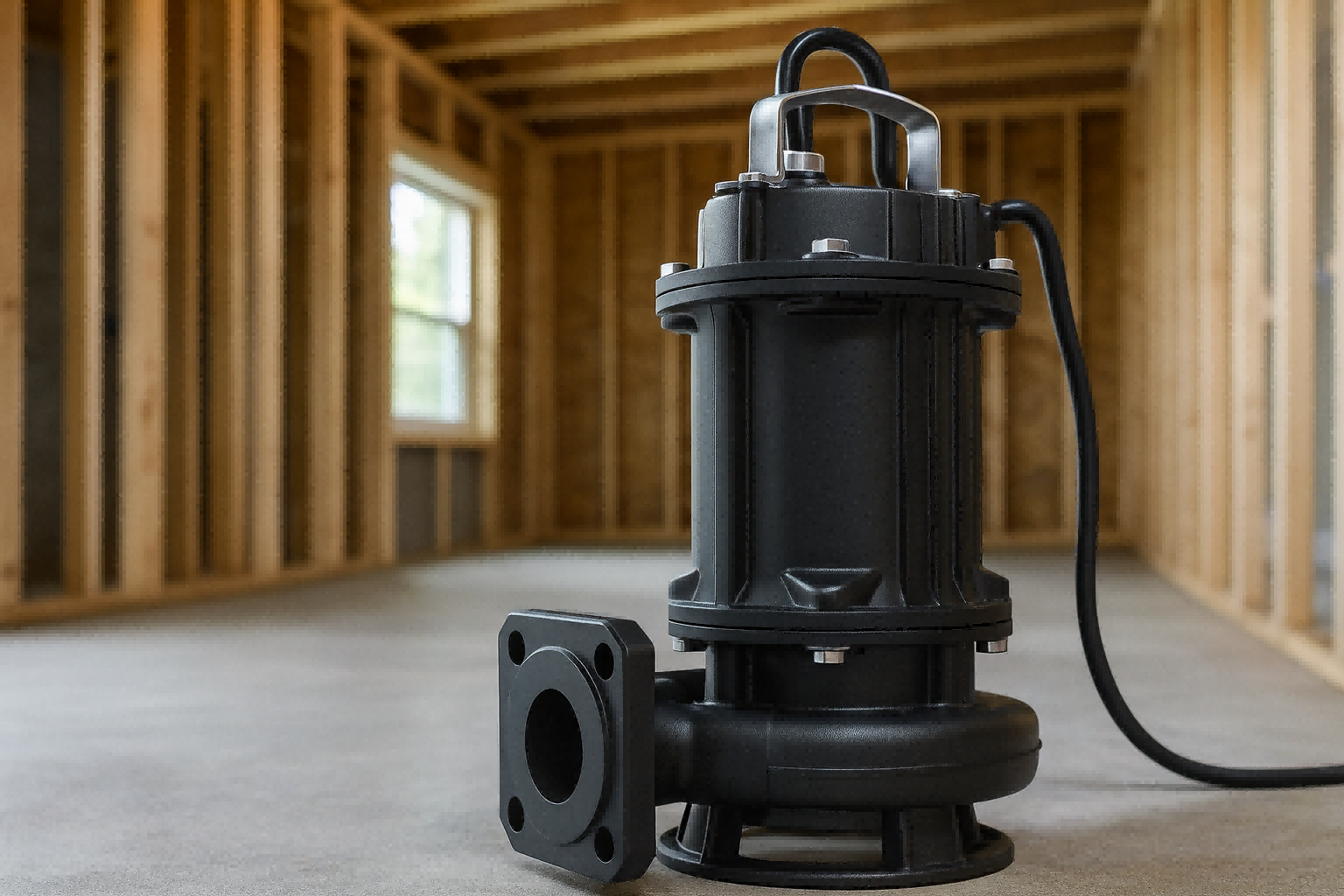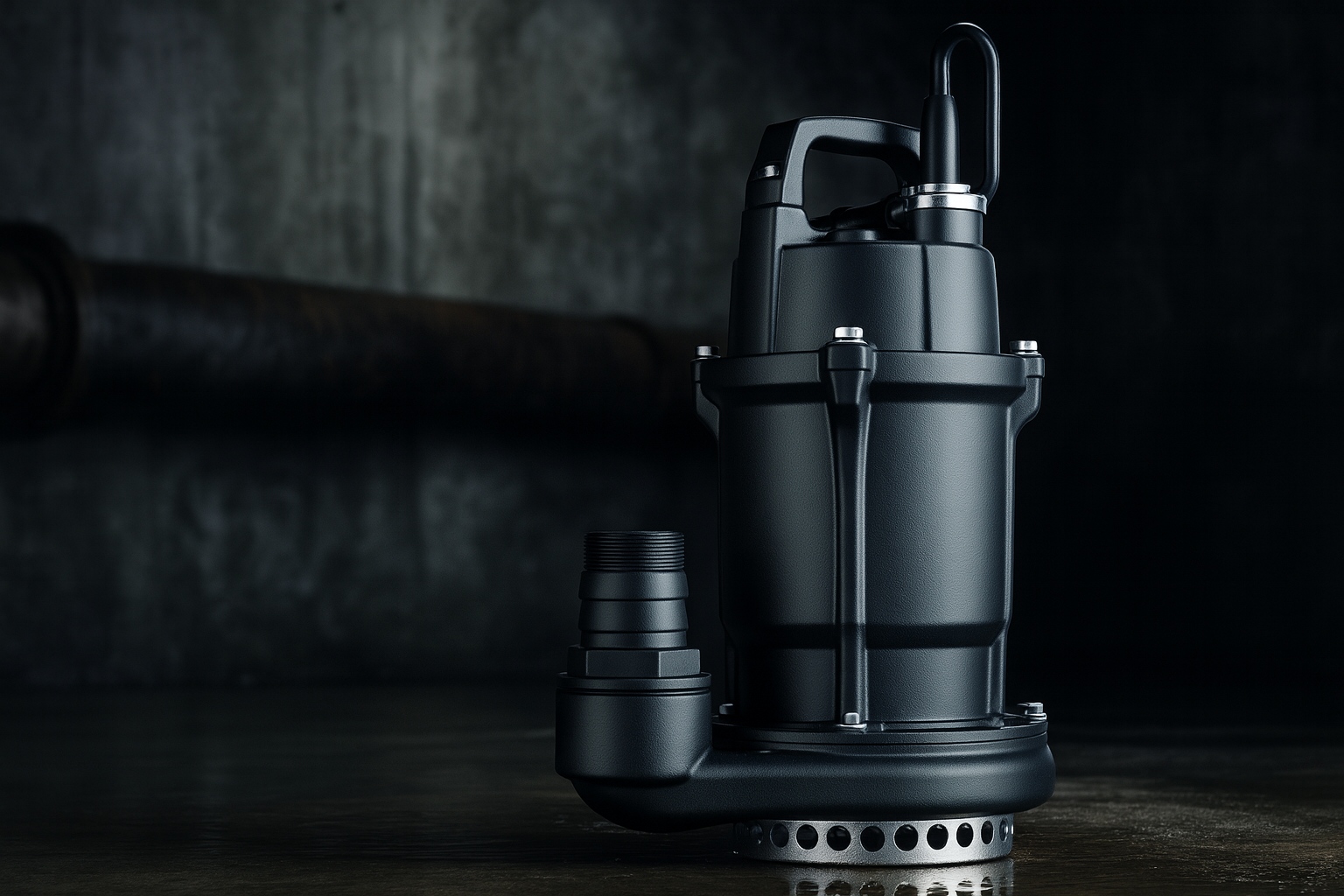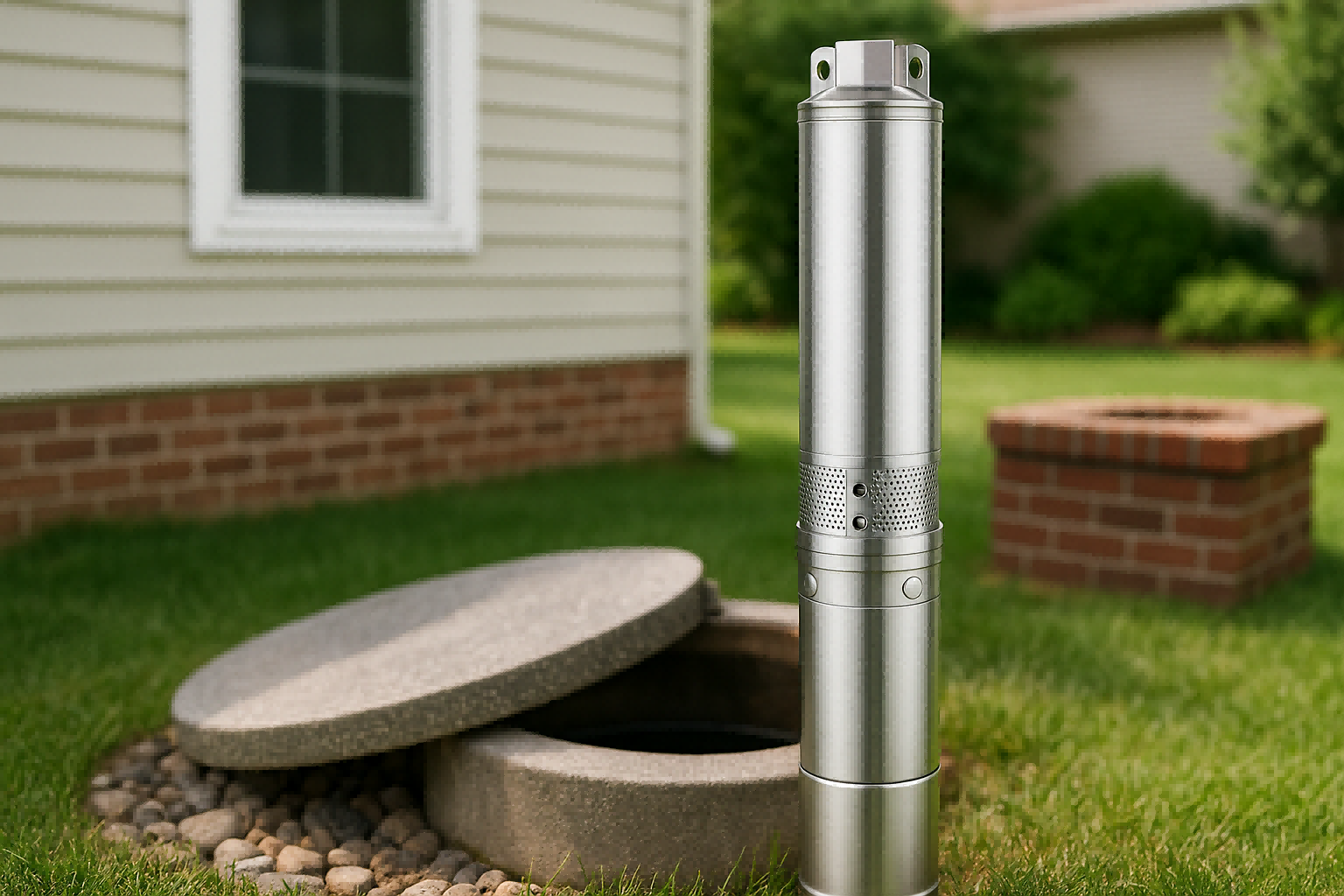Buying your dream home but discovered a sump pump in the basement?
This can spark fears of hidden water problems and costly future repairs, making you second-guess your decision.
This guide shows you how to see it as a valuable asset, not a deal-breaker.
No, it is not a bad idea.
A sump pump is often a sign of responsible homeownership and a proactive solution to prevent water damage.
Its presence means you should investigate the home's water management history, but it's a feature designed to protect your investment, not a red flag to abandon it.

Finding a sump pump shouldn't cause panic.
Instead, it should trigger a process of smart, informed investigation.
Think of it as a clue that tells a story about the home's interaction with groundwater and how it has been managed.
A home with a well-maintained sump pump can be far better protected than a home without one that has an unknown water issue waiting to surface.
Understanding what to look for and the right questions to ask will empower you to make a confident decision.
This guide will walk you through everything you need to know, from system evaluation to maintenance, turning your uncertainty into expertise.
What Does a Sump Pump's Presence Really Mean?
You see a sump pump and immediately think the house has a flooding problem.
This assumption can cause you to overlook an otherwise perfect property due to anxiety over water damage.
Understanding why it's there is the first step to making an informed, confident decision.
The presence of a sump pump indicates that the previous owner or builder considered the possibility of water in the basement.
It is a proactive, preventative measure installed for various reasons, including a high water table, local building codes, or simply as responsible planning during a renovation.
A sump pump is a solution, not necessarily a sign of a recurring disaster.
The existence of the pump means a potential water issue has already been identified and addressed.
Your task as a potential buyer is not to fear the pump but to evaluate the effectiveness and history of this solution.
Primary Reasons for Sump Pump Installation
Homeowners and builders install sump pumps for several common reasons, most of which are preventative rather than reactive to a catastrophe.
- Basement Flooding Prevention: This is the most obvious reason.
In areas with heavy rainfall or a high water table, a sump pump is a primary defense against basement flooding. - Groundwater Control: Some properties are built where the natural groundwater level is close to the basement floor.
A sump pump actively manages this, keeping the water level down and the basement reliably dry. - Building Code Requirements: In many regions, building codes now mandate sump pump installation in new construction to prevent future water issues, regardless of the property's history.
- Finished Basement Protection: When a homeowner invests in finishing a basement, installing a sump pump is a crucial step to protect that investment from any potential moisture.
- Poor Site Drainage: If a property's grading naturally directs water toward the foundation, a sump pump system helps intercept and redirect that water safely away.
Shifting Your Perspective: Problem vs. Solution
It's critical to reframe your thinking.
The sump pump isn't the problem; the potential for excess groundwater is.
The pump is the engineered solution designed to manage that potential problem.
A house with a professionally installed and maintained system is often a safer bet than a house in the same area without one, as the latter may have an unaddressed vulnerability.
| Common Fear | Engineering Reality |
|---|---|
| The house must flood all the time. | The pump is there to prevent flooding from ever happening. |
| It's a sign of a major foundation flaw. | It usually addresses groundwater, not necessarily structural faults. |
| The pump will be expensive to maintain. | Routine maintenance is far cheaper than a single basement flood repair. |
| It will fail when I need it most. | With proper checks and a backup system, it's a highly reliable tool. |
Your focus should be on due diligence.
Investigate the "why" behind its installation, assess the quality of the system, and check for any signs of past issues that may have occurred before the pump was put in place.
How to Check the Sump Pump's Functionality and Condition
You're worried the existing sump pump might be broken or poorly installed.
If it fails during the first storm after you move in, you could face thousands in unexpected water damage.
Knowing how to perform a basic evaluation can protect your investment and give you peace of mind.
Before you buy, you must verify the sump pump is operational.
A simple test involves slowly pouring about five gallons of water into the sump pit.
This should cause the float to rise, activate the pump, and drain the water.
If it doesn't work, it needs immediate attention.
A simple "on/off" test is a great start, but a thorough evaluation goes deeper.
A working pump is only one part of a reliable system.
You also need to inspect the physical components, the installation quality, and the surrounding area for any red flags that a professional might spot.
This detailed check helps you understand not just if the pump works now, but how likely it is to work for years to come.
A few minutes of inspection can reveal whether you're inheriting a robust protective system or a liability waiting to happen.
A Buyer's Visual Inspection Checklist
While a professional inspection is always recommended, you can perform an initial check yourself to identify obvious issues.
Look at the sump pit, the pump itself, and the discharge line.
- The Sump Pit:
- It should be a proper basin liner, not just a hole or a bucket set in the concrete.
- It should have a secure, sealed lid to prevent debris from falling in and moisture from evaporating into the basement.
- The Pump Unit:
- Is it sitting level and clear of debris?
- Is the power cord in good condition and plugged into a dedicated, properly grounded outlet (GFCI is best)?
- The Discharge Line:
- Check for a check valve.
This is a one-way valve on the pipe that prevents water from flowing back into the pit after the pump shuts off. - Trace the pipe outside.
It should discharge at least 10 feet away from the foundation, on a downward slope. - Ensure the exterior end of the line is not blocked by dirt, mulch, or landscaping.
- Check for a check valve.
The Water Test: What to Look For
When you pour water into the pit to test the pump, pay close attention to its operation.
- Activation: The pump should turn on automatically once the water lifts the float switch.
It shouldn't require you to jiggle the float. - Pumping Action: Listen to the pump.
It should sound smooth, not strained, rattling, or excessively loud.
The water in the pit should drain quickly.
If it churns without draining, the impeller may be clogged or broken. - Shutdown: The pump should shut off promptly once the water level drops below the float switch's shutoff point.
If it continues running (short-cycling), the check valve may have failed.
Signs of a Poorly Maintained System
Look for clues that suggest the system has been neglected.
- Iron Ochre: A reddish-brown, slimy sludge in the pit is a sign of iron-loving bacteria.
This substance can clog pumps and drainage lines and requires more frequent system maintenance. - Debris: Dirt, gravel, or other debris in the bottom of the pit can be sucked into the pump and damage the motor or impeller.
A well-maintained pit should be clean. - Excessive Noise or Vibration: While no pump is silent, loud grinding or rattling noises are a clear indicator of worn-out bearings or a damaged impeller.
Recognizing Past Water Damage and Structural Issues
The pump is there for a reason, but did it always do its job?
You're concerned that before the pump was installed, or during a past failure, water may have damaged the home.
Overlooking these subtle signs could lead to discovering mold, rot, or foundation problems after you've already bought the house.
Even with a sump pump, you must be a detective and look for evidence of past water intrusion.
Carefully inspect basement walls and floors for water stains, discoloration, or a white, powdery substance known as efflorescence.
These are telltale signs that water has been present at some point.
A sump pump is excellent at removing pooled water, but it doesn't reverse damage that has already occurred.
Water can exert immense pressure on foundation walls, potentially causing cracks and long-term structural instability.
It's crucial to distinguish between minor cosmetic issues and signs that could point to a more serious, underlying problem.
Identifying these requires a keen eye and knowing where to look, ensuring you have a complete picture of the home's condition before making your final decision.
Telltale Signs of Previous Water Intrusion
When you tour the basement, keep an eye out for these specific indicators.
Bring a powerful flashlight to inspect dark corners and behind stored items.
- Water Stains and Discoloration: Look for distinct lines or dark patches on drywall, wood posts, or concrete walls.
These "high water marks" can show how deep water has been in the past. - Efflorescence: This is a classic sign of water seeping through concrete or masonry.
It looks like a chalky, white powder left behind as water evaporates, indicating moisture has passed through the foundation wall itself. - Musty Smells: A persistent damp, earthy, or musty odor is a strong indicator of mold or mildew, even if you can't see it.
Pay attention to the smell the moment you enter the basement. - Flaking Paint or Damp Drywall: Bubbling or peeling paint on basement walls is often caused by moisture pushing it away from the surface.
Gently press on drywall; if it feels soft or crumbles, it has likely suffered water damage.
Inspecting for Structural Damage
Water doesn't just stain; it can compromise the very structure of the home.
Your inspection should include a careful look at the foundation itself.
| Type of Crack | What it Might Mean | Level of Concern |
|---|---|---|
| Thin, vertical cracks | Often due to concrete curing/settling. | Low (but should be sealed) |
| Horizontal cracks | Caused by exterior pressure from soil/water. | High (potential wall bowing) |
| Stair-step cracks (in block walls) | Indicates settling or wall movement. | Moderate to High |
| Cracks wider than 1/8 inch | Suggests significant movement. | High |
Connecting the Dots
Think about the relationship between the sump pump and any damage you find.
If you see high water marks well above the sump pump pit, it could mean the basement flooded before the pump was installed or during a power outage.
If you see stains or efflorescence near a foundation crack far from the pump, it might suggest the pump is only part of the solution and that additional waterproofing (like crack sealing or an exterior membrane) may be needed.
This is when it becomes essential to bring in a professional for their expert opinion.
The Different Types of Sump Pumps and Backup Systems
You've confirmed the pump works, but is it the right kind of pump for the job?
Relying on a single, basic pump leaves you vulnerable to power outages during a storm—the exact time you need it most.
Without a backup, your home is unprotected when the risk is highest.
To be truly protected, your home should have a backup system.
Power outages are common during severe storms, and a standard sump pump is useless without electricity.
A battery backup pump or a combination system provides a critical layer of security, ensuring your basement stays dry even if the power goes out.
Understanding the different sump pump configurations is key to assessing your level of protection.
There isn't a single "best" type of pump; the ideal system depends on the home's specific needs, the frequency of power outages in the area, and the volume of water it needs to handle.
By learning the pros and cons of each type, you can determine if the home's existing setup is adequate or if you'll need to budget for an upgrade to achieve complete peace of mind.
The Four Main Types of Sump Pumps
There are two primary pump designs and two main types of systems that offer enhanced protection.
-
Submersible Sump Pumps
- Design: The entire unit (motor and pump) sits inside the sump pit, submerged in water.
The motor is sealed in a waterproof housing. - Pros: Quieter operation, less obtrusive, often more powerful.
- Cons: Shorter lifespan (typically 5-15 years) due to being constantly in water, can be more expensive.
- Design: The entire unit (motor and pump) sits inside the sump pit, submerged in water.
-
Pedestal Sump Pumps
- Design: The pump sits at the bottom of the pit, but the motor is mounted on a column (pedestal) above the pit, out of the water.
- Pros: Longer lifespan (typically 20-30 years), easier to service, generally less expensive.
- Cons: Noisier, takes up more space above the pit.
-
Battery Backup Sump Pumps
- Design: This is a secondary, smaller pump that runs on a deep-cycle marine battery.
It sits alongside your primary pump. - Function: If the power goes out, its controller detects the power loss and a rising water level, automatically activating the backup pump.
It also provides protection if the primary pump fails for any mechanical reason. - Importance: Considered an essential component for any home that relies on a sump pump.
- Design: This is a secondary, smaller pump that runs on a deep-cycle marine battery.
-
Combination Sump Pumps
- Design: These systems package a primary submersible pump and a battery backup pump into a single, pre-assembled unit.
- Function: Offers a two-in-one solution for comprehensive protection against both high water volume and power outages.
The controller manages both pumps and the battery charging. - Best For: Homes in areas with very heavy rainfall or frequent power outages, providing maximum pumping capacity and redundancy.
Why a Backup System is Non-Negotiable
A single pump offers protection only when conditions are perfect.
A complete sump pump system is designed for when conditions are at their worst.
| Scenario | Standard Pump | System with Battery Backup |
|---|---|---|
| Heavy Storm, Power On | Works as intended. | Primary pump works, backup is ready. |
| Heavy Storm, Power Outage | FAILS. Basement floods. | PROTECTED. Backup pump activates. |
| Primary Pump Mechanical Failure | FAILS. Basement floods. | PROTECTED. Backup pump activates. |
| Water Inflow Exceeds Pump Capacity | Pump runs constantly, may burn out. | Backup pump can activate to assist. |
When buying a home, if it only has a single primary pump, you should strongly consider the cost of adding a battery backup system (typically a few hundred to over a thousand dollars) into your immediate post-purchase budget.
It's an investment in preventing a far more expensive disaster.
Key Questions to Ask the Seller or Real Estate Agent
You have your inspection checklist, but you can't see the past.
Important information about the pump's history, past water events, and maintenance is known only by the current owner.
Without asking the right questions, you're buying the house with incomplete information, leaving you to guess about its history.
To get the full story, you need to ask direct and specific questions.
Go beyond "Does the basement leak?" and dig into the history of the water management system.
Ask about the sump pump's age, maintenance records, and if there have ever been any water incidents, even with the pump in place.
The seller's answers (or lack thereof) can be incredibly revealing.
Honest, detailed responses about regular maintenance and the occasional small issue that was promptly fixed can be a sign of a responsible homeowner.
Vague answers or claims that the pump has "never been needed" despite its presence should prompt you to be more cautious and rely more heavily on your professional inspections.
Getting this information can provide valuable context, helping you understand the real-world performance of the system you are about to inherit.
Essential Questions for Your Inquiry
Have these questions ready for your real estate agent to ask the seller.
Where possible, request documentation like receipts for service or purchase.
-
"How old is the sump pump, and when was it installed?"
- This helps you gauge its remaining lifespan.
A 15-year-old pump is nearing the end of its life and should be factored in as a potential replacement cost.
- This helps you gauge its remaining lifespan.
-
"Do you have any maintenance, service, or repair records for the pump?"
- A homeowner with a folder of receipts is one who likely took good care of the system.
No records at all suggests it may have been neglected.
- A homeowner with a folder of receipts is one who likely took good care of the system.
-
"Has the basement ever had water in it since you've owned the home? If so, what were the circumstances?"
- This is a crucial question.
Did it happen before the pump was installed?
Was it because of a power outage or a pump failure?
This tells you about the system's potential vulnerabilities.
- This is a crucial question.
-
"Why was the sump pump originally installed?"
- Was it a preventative measure during construction, a requirement for a finished basement, or a reaction to a specific flooding event?
The answer provides invaluable context.
- Was it a preventative measure during construction, a requirement for a finished basement, or a reaction to a specific flooding event?
-
"Is there a backup system in place? If so, how old is the backup pump and the battery?"
- A backup battery typically only lasts 3-5 years.
An old battery might give you a false sense of security and will need immediate replacement.
- A backup battery typically only lasts 3-5 years.
Interpreting the Answers
How the seller responds is as important as what they say.
| Seller's Response | Possible Interpretation | Your Next Step |
|---|---|---|
| "We have it serviced every year by XYZ Plumbing. Here are the receipts." | Indicates a responsible owner and a reliable system. | Review the records. |
| "It was here when we bought the house. We've never touched it." | The pump has likely been neglected and may be unreliable. | Budget for a full service and likely replacement. |
| "We had a little water once during a huge storm when the power went out." | Confirms the house is vulnerable to power outages. | Confirm there is now a backup system. If not, plan to install one. |
| "I'm not sure." / "I don't know." | Either a lack of knowledge or an attempt to avoid disclosure. | Rely entirely on your own professional inspections. Be cautious. |
Asking these questions transforms you from a passive observer to an active investigator.
The information you gather helps you build a complete risk profile for the property, allowing you to negotiate from a position of knowledge and plan for any necessary upgrades.
Conclusion
Buying a home with a sump pump is not a bad idea; it's an opportunity.
It signals that you must perform thorough due diligence but also shows a protective system is in place.
FAQs
Is a house with a sump pump harder to sell?
Not necessarily.
A well-maintained sump pump system can be a positive selling feature, assuring buyers the home is protected against water damage, which is a valuable peace of mind.
How long do sump pumps last?
A submersible pump typically lasts 5 to 15 years, while a pedestal pump can last 20 to 30 years.
Lifespan depends heavily on usage frequency and regular maintenance.
Does a sump pump mean a house has a wet basement?
It means the house has the potential for a wet basement, which the pump is designed to prevent.
It is a mitigation tool, not proof of an existing problem.
Do you need a sump pump if you don't have a basement?
Yes, sump pumps are also installed in crawlspaces.
If a crawlspace is below the local water table, a sump pump is essential to keep it dry and prevent moisture issues.
Can a sump pump run all the time?
A pump that runs constantly may indicate a problem.
Possible causes include a stuck float switch, a missing or broken check valve, or an overwhelming amount of incoming water.
How much does it cost to replace a sump pump?
The cost to replace a sump pump typically ranges from a few hundred to over a thousand dollars, depending on the type of pump, labor costs, and your location.
Can I get a mortgage on a house with a sump pump?
Yes, a sump pump does not prevent you from getting a mortgage.
Lenders view it as a feature that protects the home's value, as long as it is functional.
What is the white stuff on my basement walls?
The white, powdery substance is efflorescence.
It is left by salt deposits as water evaporates from the concrete and indicates that moisture has passed through the foundation walls.








